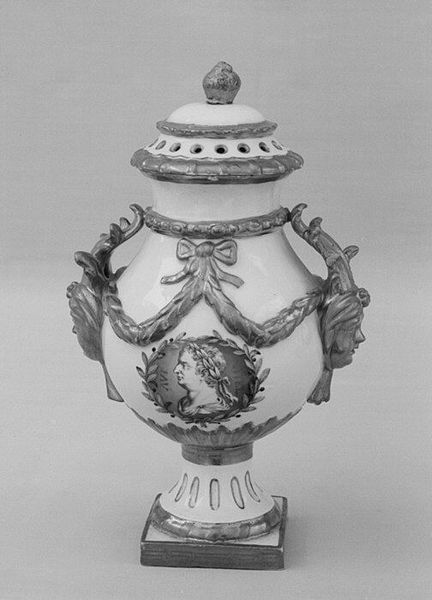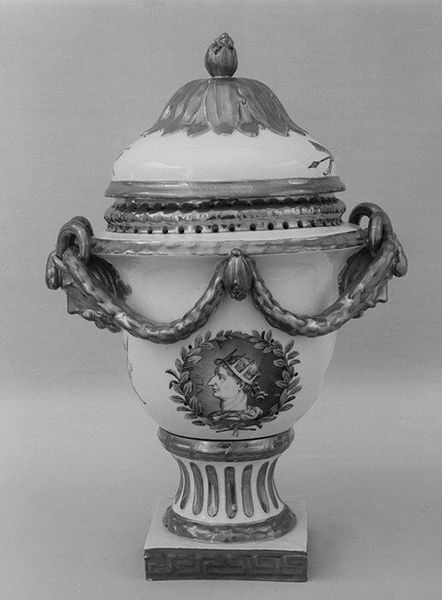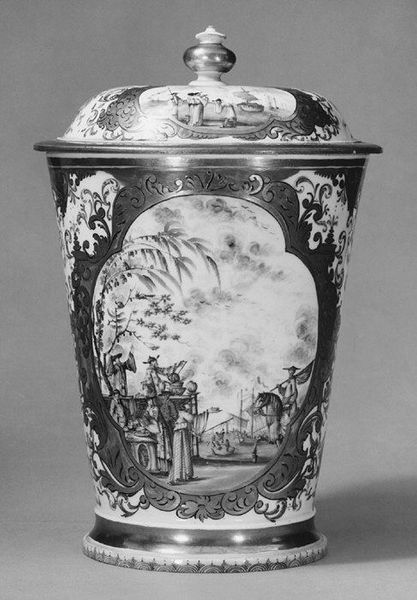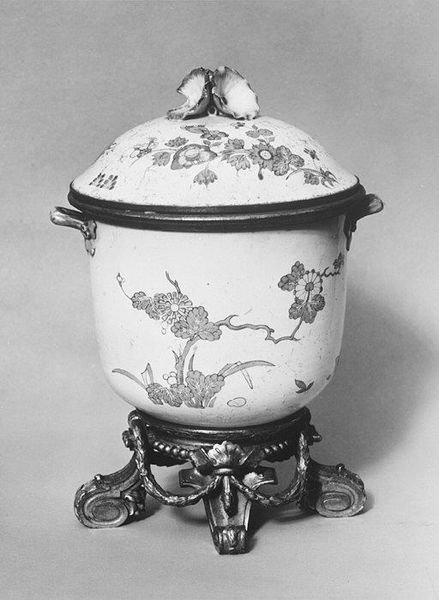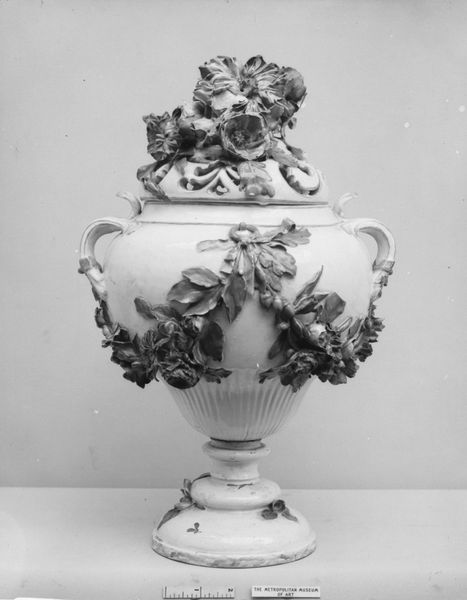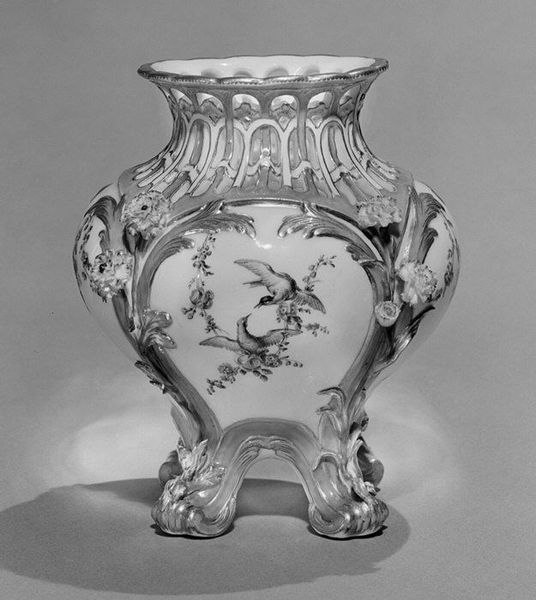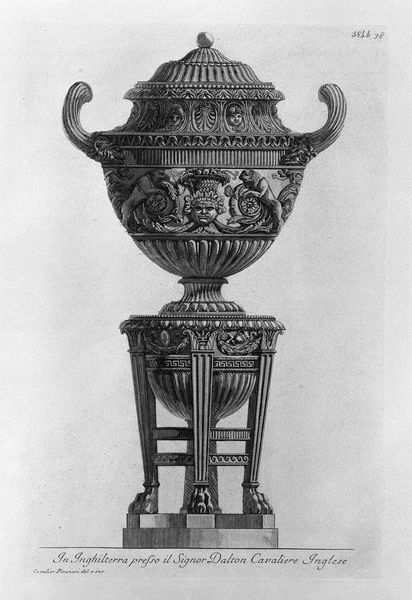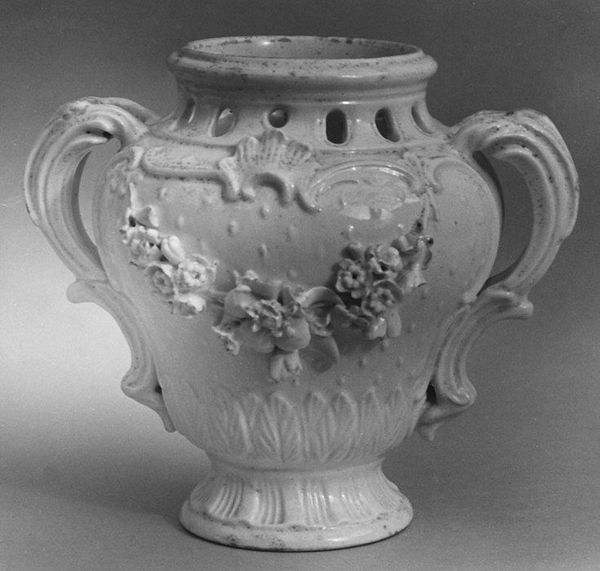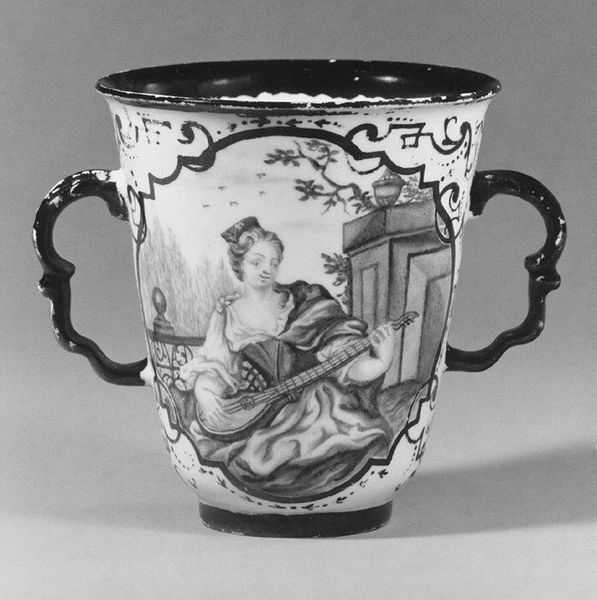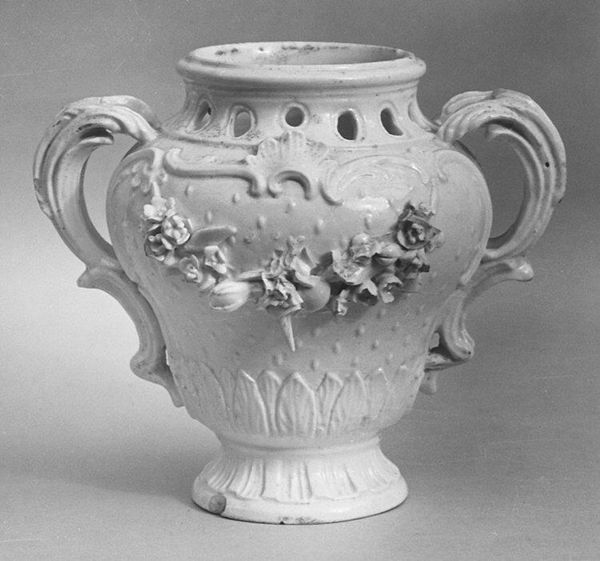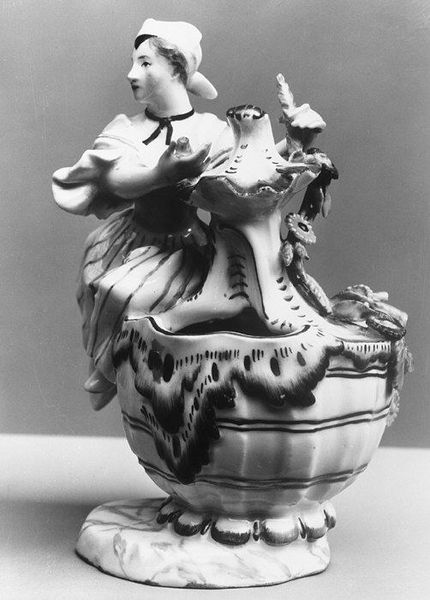
Vase (part of a garniture) 1775 - 1795
0:00
0:00
ceramic, porcelain, sculpture
#
neoclacissism
#
sculpture
#
ceramic
#
classical-realism
#
porcelain
#
sculpture
#
decorative-art
Dimensions: Height: 9 1/2 in. (24.1 cm)
Copyright: Public Domain
This vase was produced at the Fürstenberg factory, which began as a state-sponsored initiative in 1747 in Germany. The vase is made of white porcelain, with painted decoration and gilded details. Porcelain is essentially petrified clay, made by combining kaolin with other minerals, and firing at extremely high temperatures. This results in a very hard, translucent material, prized for its smooth surface and ability to take fine decoration. Here, the factory artists have used the material’s receptive surface to their advantage, carefully painting a portrait medallion and adding delicate gilding. These kinds of details required highly skilled labor, divided between modelers, painters, and those responsible for firing in the kiln. The final result is one of luxury, intended for aristocratic display. Considering porcelain production in this period, the vase becomes more than just a pretty object. It is a testament to craft skill, industrial organization, and the complex social dynamics of 18th-century Europe.
Comments
No comments
Be the first to comment and join the conversation on the ultimate creative platform.
